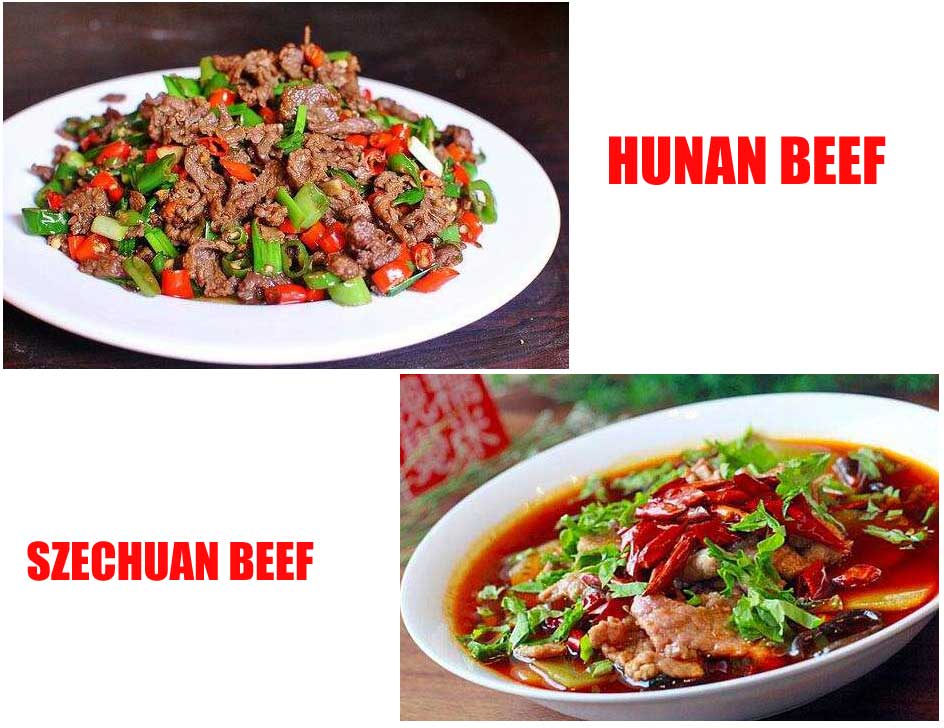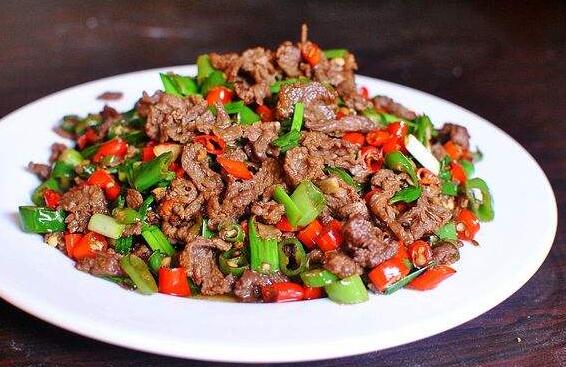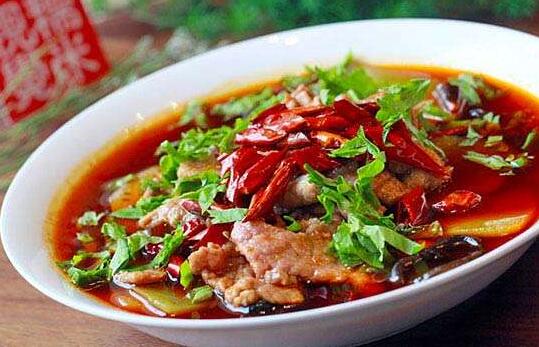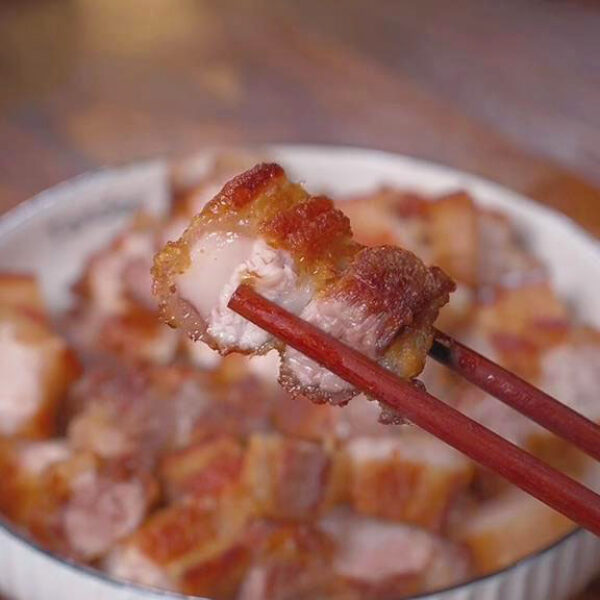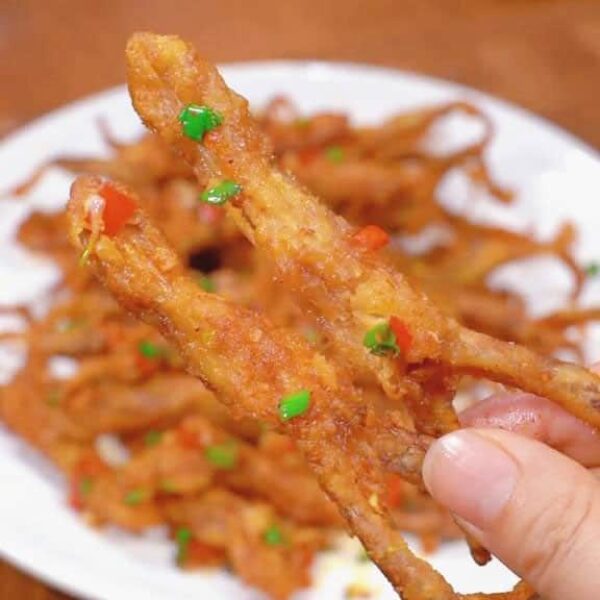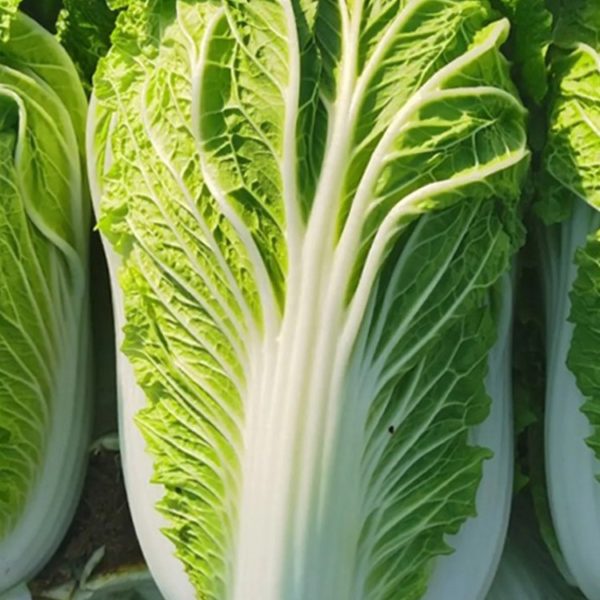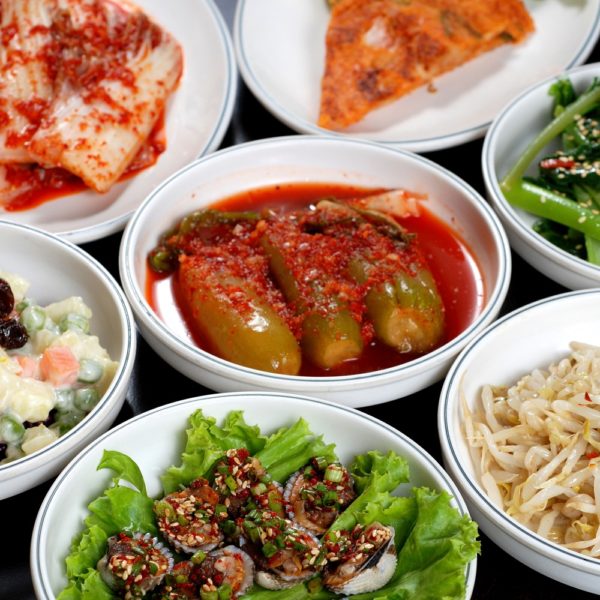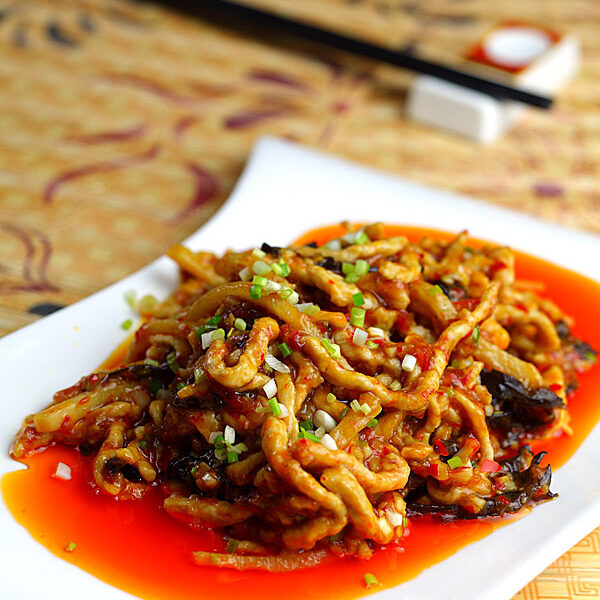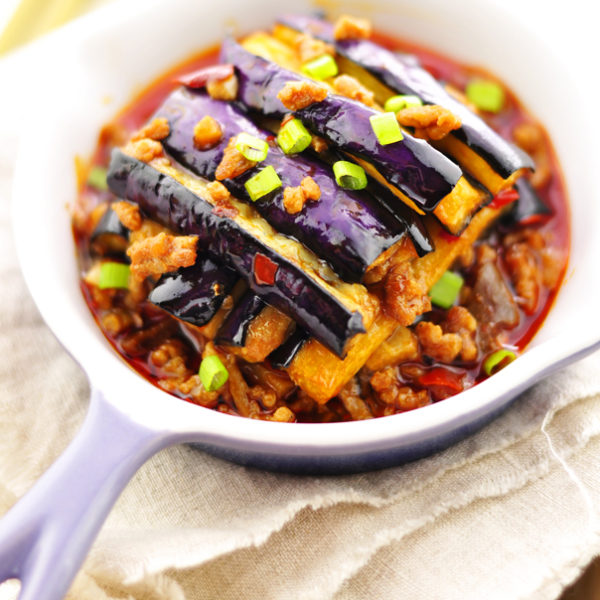Hunan Versus Szechuan Beef
China is known around the world for its distinctive and flavorsome cuisine. Two of the most popular schools of cooking are the Hunan and Szechuan styles, both being very similar in their love of spiciness.
For some, it can be hard to tell them apart. What are the defining characteristics of each style? How do they differ when it comes to a beef dish?
Today we answer the question; what is the difference between Hunan Beef vs Szechuan Beef?
Hunan Beef
In this approach with beef, a spicy brown sauce is developed with an overnight marinade. Flank steak is marinated ideally overnight and quickly fried along with peppers and garlic.
Hunan beef has a stronger flavor derived from more chilli and fresh garlic used in the preparation.
While there are some variants in the cooking methods used depending on the recipe, there are strict methods allowed to be used in the preparation of Hunan Beef.
History of Hunan Beef
The dish dates back to the 17th century. Hunan Beef is the main dish from the Xiang region, and its ingredients are symbolic of the agricultural output of Huna Province, Xiang River, and Dongting Lake, which is why Hunan Beef features so many fresh ingredients.
The dish can be eaten cold in summer, while served hot in winter.
Hunan cuisine uses a broad range of methods, and Hunan beef is usually prepared by stir-frying the meat with the spices.
Preparation and Presentation
Hallmarks of Hanan style cooking are preparation and presentation. When compared to the Szechuan counterparts, chefs who use the Hanan style of cooking tend to have more elaborate methods leading up to the meal, including the marinating process.
This also flows through to presentation, when the Hanan style meal will usually be more appealing to the eyes.
Main Defining Traits of Hunan Beef
Hunan beef in the end result is served with a darker deep brown color, with more straightforward heat in the flavor on account of the fresh spices that are used in the cooking process.
Hunan Beef also usually has an oilier texture and is often served with a side of rice and steamed vegetables.
Thanks to the marinating process, the meat is usually very tender especially if first velveted before being fried.
Making Hanan Beef at Home
There are many methods that can be used to make a Hanan beef at your own home.
To do so, you will need a few ingredients that are typically found in the cupboard of any Chinese cooking enthusiast; soy sauce, rice wine vinegar, and some basic dried herbs and spices.
The most important part is to have the chilli and garlic, and obviously the beef. Flank steak is most popular although you can use any cut including tenderloin that suits your tastes.
Hanan beef is usually cooked on a wok and the dish is quick to cook after some early preparation.
Variations in Recipe
The Hunan style does allow for some creative changes to be made with the dish. Hunan beef is great for experimenting, and the following variations could suit what you are wanting from your meal:
● Cook using a combination of fresh and dried peppers, black beans, shallots, and other vegetables to deliver more flavor and texture.
● Broaden your culinary horizons by making Hunan Beef with Cumin. Cumin is rarely used in Chinese cooking but adds depth for a sophisticated culinary profile.
● Create more depth in flavor by including oyster sauce in your marinade and including vegetables such as carrot that will offer more texture to the dish.
Szechuan Beef
Perhaps one of the most famous provinces for Chinese cuisine both inside and outside of China is the Szechuan province, well known for providing the strongest flavors in China.
The Szechuan style of cooking is characterised by the use of the Szechuan peppercorn; a pepper that also provides a numbing effect in the mouth potentially allowing the greater flavor to be tasted. Szechuan cooking is iconic and synonymous with the legendary flavors of Chinese cuisine.
History of Szechuan Beef
The culinary style of the Szechuan province is well-known and recognised, dating back to the Qin and Han dynasties.
The Szechuan pepper is relatively recent though, appearing late in the seventeenth century.
The region is known as the land of plenty and produces a wide variety of animals suitable for eating.
There are over 5,000 Szechuan recipes that can be identified, and the capital Chengdu is a UNESCO recognized City of Gastronomy.
Preparation and Presentation
Marinating is a major part of making Szechuan beef. In this case on top of tenderizing the beef, the marinating process is also introducing more flavour with chilli.
Most Szechuan Beef recipes also call for a chilli paste to be used. With the use of a chilli paste the resulting dish winds up being a red sauce instead of a brown sauce. Visually, this red sauce makes the dish appear more spicy straight away.
Main Defining Traits of Szechuan Beef
Szechuan Beef gains a crunchy texture through the use of peanuts and water chestnuts. Just like most Szechuan cuisine, Szechuan Beef features traditional flavors of the style including ginger, chili, salt, sugar, and garlic are all included.
Szechuan Beef is generally described as being spicy and sweet rather than a full-on heat of similar dishes.
Szechuan Beef will also often use chicken stock to produce more of a saucy dish.
Making Szechuan Beef at Home
There are many variations to consider when it comes to choosing a recipe. Many different cuts of beef can be used, but the tenderloin is ideal if you would like to have the softest end result.
The biggest component when it comes to preparation is often the vegetables. Find a decent Chinese grocer to source ingredients such as bean paste or Chinese cooking wine. Cooking Szechuan Beef is often about patience and timing in combining the flavors.
Variations in Recipe
There are two main types of Szechuan Beef recipe; one that produces a crispier end result with the use of dry heat and others like the one above that incorporate chicken stock to produce a saucier dish perfect to be served with some rice. The following are a few options to try:
● Szechuan Beef in the drier style with a heavier chilli influence. This version still has other vegetables added to the stir fry too.
● More user-friendly versions that may be more convenient for those of us who don’t have a wok. This recipe also emphasises the need for chilli oil to give an extra kick.
● Versions that add hoisin or oyster sauce to give that different depth of flavor, and change in color for the sauce.
Hunan Versus Szechuan
So where do we find this as an end result, given all that we now know about both Szechuan Beef and Hunan Beef?
What can we definitively say are the main characteristics that differentiate these two pillars of Chinese cuisine?
That is, after all, what we are here to find out.
Spiciness
Both Hunan Beef and Szechuan Beef are characteristic of being spicy dishes, although the two do experience a difference in notoriety, with Szechuan style cooking being world-famous as the gold standard in Chinese heat.
However, Hunan Beef delivers the greater kick as far as chilli is concerned, with Szechuan Beef being a more spicy-sweet sensation.
That being said, the Szechuan peppercorns are known to numb the taste slightly permitting this to happen.
Presentation
The Hanan style of chef puts more effort into presenting the food on plate, making the dish as visual work of art. Szechuan often looks like a pile of meat in sauce with vegetables.
The Hunan Beef is also a deep brown colour, whereas Szechuan is fiery red on account of the chilli paste that is used in cooking.
Vegetables and Nuts
Both dishes are supported by different vegetables. Hunan Beef is more basic with what is served with the dish, often simply some bell peppers and maybe some carrot.
The Szechuan style on the other hand has more variability in the vegetables, and usually has the addition of either peanuts, water chestnuts, or both.
The Common Ground
Both dishes are obviously made using beef, often either tenderloin or flank. Both dishes use thin strips of meat that are combined with chilli, usually stir fried.
Both dishes are also recognised as being among the hottest and most flavorful of Chinese beef dishes, and both dishes are usually served with rice. Garlic and ginger both feature across recipes for each dish.
The Preparation
Both dishes require a moderate amount of skill in cooking, and ideally a wok. If you’re going to attempt cooking each at home, Hunan Beef lends itself better to the more novice chef whereas Szechuan Beef is better for the professional, especially when it comes to sourcing the best ingredients.
That being said, there are some more elementary versions of Szechuan Beef recipes more conducive to a novice Chinese chef.
Conclusion: The Verdict
Hunan Beef and Szechuan Beef are two dishes that seem to have evolved parallel to each other, the defining differences being the visual color between the two dishes, along with the intensity of the heat. Both are excellent examples of strength in flavor with Chinese food.
The true determination of which one you should cook tonight is a resounding ‘Yes’ since it is well worth experimenting with the full spectrum of Chinese cooking that is available.
Hunan Beef will be great for the beginner, while Szechuan will be a good dish for the seasoned Chinese culinary pro.
